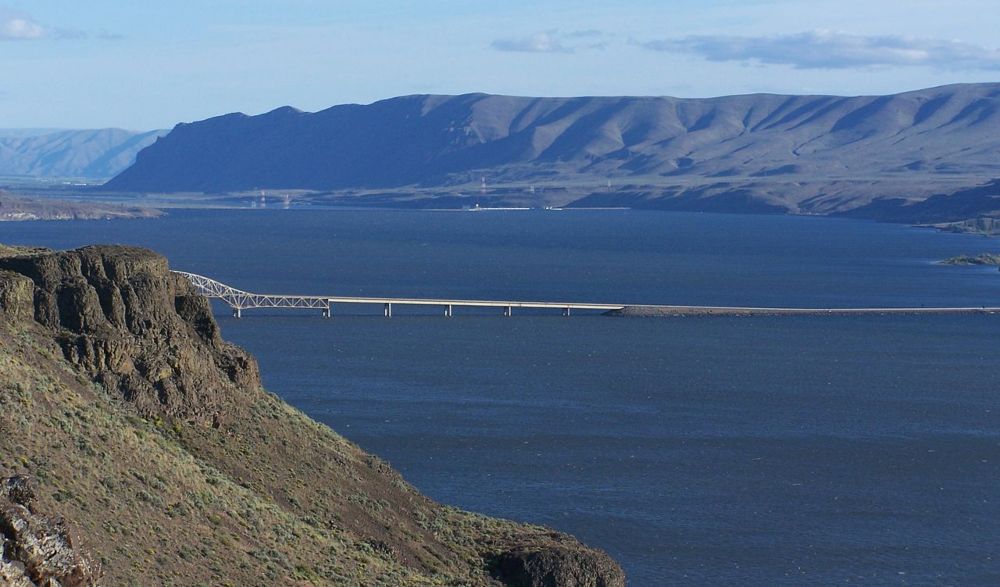Interstate 90 from Seattle to Spokane meanders through an unusual region of Native history and geography. At its approximate mid-point in Washington state the Columbia River cuts through jagged cliff walls. This towering formation, overlooking grand views north and south, vibrates with prehistoric echoes. The area has a name: Vantage, a moniker derived from ferry-boat operator named Van Slack, who gave up his route upon construction of a new bridge in 1927.
Vantage has retained its rugged character and continues to attract visitors with a gingko petrified forest park, the nearby Gorge Amphitheater, a visitor center, and one of the Columbia River’s great vistas. This point south to the Vernita Bridge is known as Wanapum country. “Wana” in the local Native language means “river.” “Pum” refers to the country and its occupants, the “River People.” Fishing was (and still is) a central way of life. Although the great fisheries have been mitigated by dams, farming and ranching, shopping centers, settlements and roads, the Wanapum have not conceded their rights to fish in nearby ancestral waters.
River fishing is one way the Wanapum Native culture has been kept alive. In protecting and enhancing that culture and its 12,000-year-old fishing tradition, Natives of the region point to revered prophets, especially Smohalla and Skolaskin, who advised the River People to return and to ignore efforts by Euro-American newcomers to settle, farm, build schools and churches and otherwise introduce “visitor” traits. Smohalla is alleged to have stated: “My young men shall never work. Men who work cannot dream, and wisdom comes to us in dreams.”
Expanding on this theme, Smohalla’s vision/faith suggested that if the Wanapum soil is disturbed, great calamities will occur. In other words, seasonal foraging by Natives did not violate God’s great creation, but the dawn-to-dusk digging, construction, cutting, and planting by Whites was an insult to the earth.
In the 1880s, after local settlers voiced alarm at Wanapum ceremonies, which were characterized by dances, flags, and singing, Army Major J.W. MacMurray was sent to Priest Rapids (named for Smohalla’s followers) to meet with the Natives and learn what the restlessness was all about. MacMurray found a busy village with red-robed women chanting to the beat of drums. Trances were apparently induced during dances. Smohalla wore a white shirt, let his hair grow, and led dancers with songs and chanting. When he died in 1895, blind and impoverished, a brief revival of his dreamer religion emerged and then spread in different forms to other Pacific Northwest tribes.
Variations of Smohalla’s religion at other Inland Empire tribes are noted along with the rise of extraordinary Native myths and long fireside stories. Some think that these myths were founded in distrust and disappointment. The white visitors had not kept their promises. The land was gone, and thousands of Natives had died from diseases inadvertently brought by white settlers.
Today Priest Rapids Dam stoically and silently rests astride the Columbia River in Eastern Washington. There is no trace of the dreamers and their symbols, flags, and dances. Smohalla’s former lodge with the seven-point star banner has disappeared into the precious earth revered by his followers.

This explains why I started dreaming a lot after I retired…
Thank you for your focus on the history and traditions of indigenous people in our region. Very informative.
What a beautifully written and important article this is! That final stanza just stopped my breath. Deep thanks.